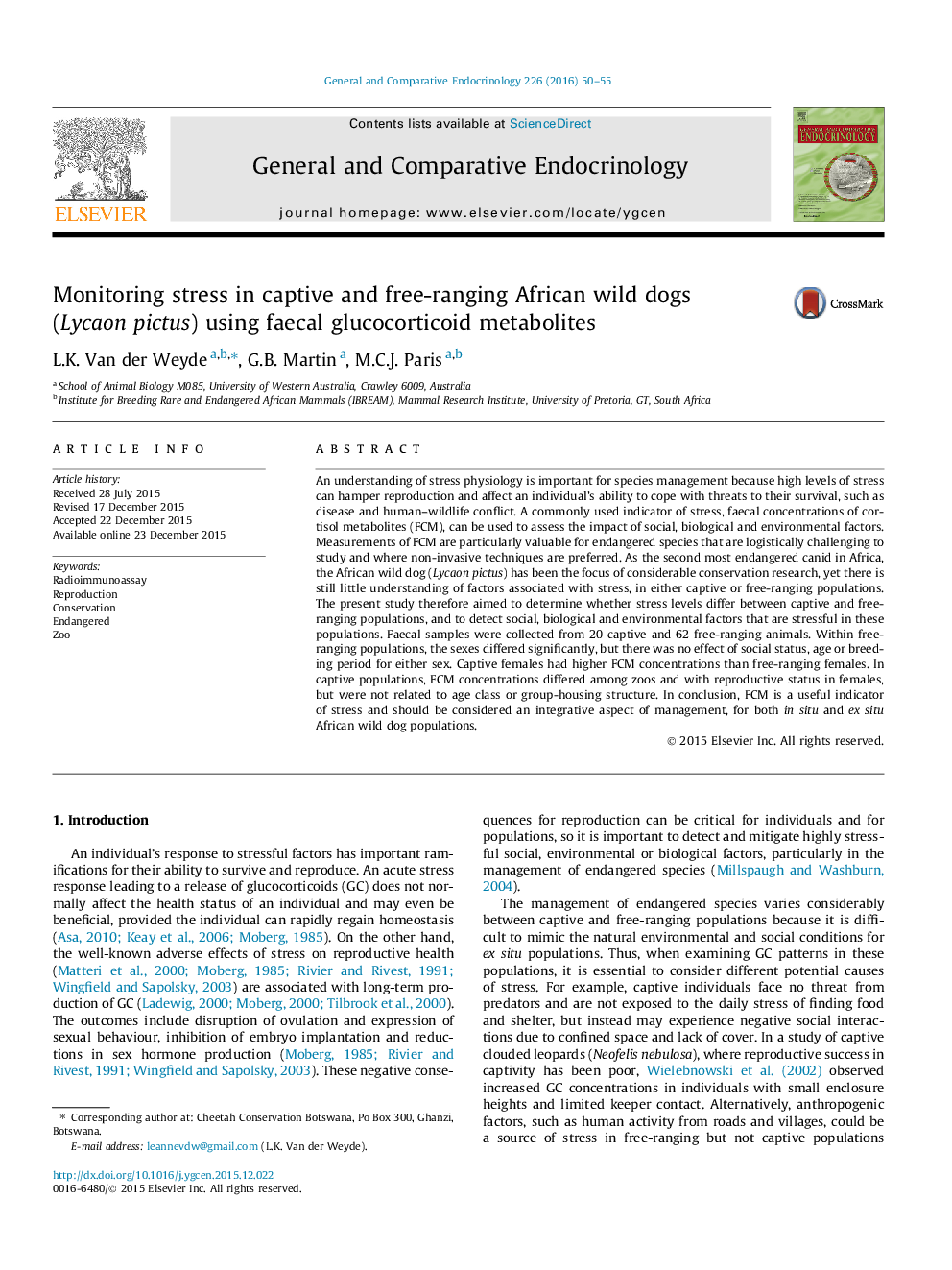| کد مقاله | کد نشریه | سال انتشار | مقاله انگلیسی | نسخه تمام متن |
|---|---|---|---|---|
| 2799825 | 1568880 | 2016 | 6 صفحه PDF | دانلود رایگان |
• A RIA was used to assess faecal cortisol concentrations in African wild dogs.
• Population differences were detected between captive and free-ranging females.
• Faecal cortisol concentrations were higher in cycling than acyclic females.
• Stress levels in female wild dogs appear to vary among zoos.
An understanding of stress physiology is important for species management because high levels of stress can hamper reproduction and affect an individual’s ability to cope with threats to their survival, such as disease and human–wildlife conflict. A commonly used indicator of stress, faecal concentrations of cortisol metabolites (FCM), can be used to assess the impact of social, biological and environmental factors. Measurements of FCM are particularly valuable for endangered species that are logistically challenging to study and where non-invasive techniques are preferred. As the second most endangered canid in Africa, the African wild dog (Lycaon pictus) has been the focus of considerable conservation research, yet there is still little understanding of factors associated with stress, in either captive or free-ranging populations. The present study therefore aimed to determine whether stress levels differ between captive and free-ranging populations, and to detect social, biological and environmental factors that are stressful in these populations. Faecal samples were collected from 20 captive and 62 free-ranging animals. Within free-ranging populations, the sexes differed significantly, but there was no effect of social status, age or breeding period for either sex. Captive females had higher FCM concentrations than free-ranging females. In captive populations, FCM concentrations differed among zoos and with reproductive status in females, but were not related to age class or group-housing structure. In conclusion, FCM is a useful indicator of stress and should be considered an integrative aspect of management, for both in situ and ex situ African wild dog populations.
Journal: General and Comparative Endocrinology - Volume 226, 15 January 2016, Pages 50–55
